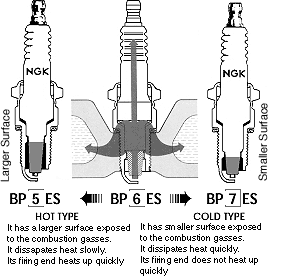The spark plug is probably the most underrated part of a scooter. It is a good practice to use the plug as a kind a of thermometer to check the health of your engine.
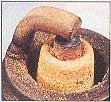 Normal NormalGrey-brown deposits, lightly coated core nose. Plug is ideally suited to engine and engine is in good conditions with right setup. |
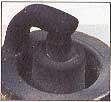 Carbon fouling Carbon foulingDry, black sooty deposits. Fault: over-rich fuel mixture. Check: carburetor mixture settings, float level, choke operation or air filter. |
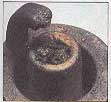 Electrode damage Electrode damageElectrodes burned away, core nose has burned, glazed appearance. Fault pre-ignition. Check: plug for correct heat range and as for ‘overheating’ |
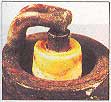 Lead glazing Lead glazingPlug insulator firing tip appears yellow or green/yellow and shiny in appearance. Fault: often caused by incorrect carburetion, excessive idling followed by sharp acceleration. Also check timing. |
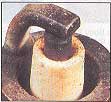 Overheating OverheatingElectrodes have glazed appearance, core nose very white – few deposits. Fault: plug overheating. Check: plug value, ignition timing, fuel octane rating (too low) and fuel mixture (too weak). |
 Split core nose Split core noseMay appear initially as a crack. Fault: detonation or wrong gap-setting. Check: ignition timing, cooling, fuel mixture (too weak). |
Plug cleaning: Although modern two stroke oil have a much cleaner combustion now it is wise to clean the plug from time to time. When using a wire brush make sure that no brushed off parts or dirt get between the electrodes or nose gap. With the plug removed clean also the area where the plug seats in the head as grit and dirt can cause gas leakage or thread damage. Also wipe any traces of oil or grease from plug leads as this may lead to arcing.
Hot & cold: Spark plugs must operate within well-defined temperature limits to avoid cold fouling on one extreme and overheating on the other. So a good plug must be able to work faultless in conditions from freezing cold start to continuous high speed motorway cruising.
The temperature of the spark plug’s firing end must be kept low enough to prevent pre-ignition, but high enough to prevent fouling. This is called “Thermal Performance”, and is determined by the heat range selected.
A hot spark plug does hardly transfer any heat to the cylinder head, which means that the spark plug itself becomes very hot and reaches the so-called self cleaning temperature quickly. If you use a spark plug, which is too hot, a hole in the piston can be the result. It is always reasonable to begin with a cold spark plug. A cold spark plug pass the developing heat almost completely to the cylinder head. In that way the spark plug stays cooler. Cold spark plugs are the first choice for engines, which have a high operating temperature (air-cooled high performance cylinders).
Since different manufactures use other numbering systems to define their plugs, hot and cold plugs often get mixed up:
Champion and Bosch: the higher the number on the plug the hotter the plug, and the lower the number the cooler the plug. NGK and Nippon Denso do it just the other way: the higher the number on the plug the colder the plug and vice versa.
The correct spark plug for your engine depends on the use of the engine. Manufacturers recommend different grades of plugs per engine. A medium grade plug (like NGK B7ES) is good for general use around town, dual carriageway or motorway. A colder plug (like NGK B8ES) will be required for motorway touring.
Running an engine on a hot plug, flat out on a motorway would soon overheat, pink and bum out. Running an engine around town on a cold racing plug would soon foul up causing misfires. Use this table to get a general idea of choosing the right plug.
| Grade | NGK | Nippon Denso | Champion | Bosch | Bike Type | Use |
| Hot | B7ES | W22ES-U | N5 | W5CC | Standard | Town |
| B8ES | W24ES-U | N4 | W4CC | TS1/tuned | Motorway Touring | |
| B9ES | W27ES-U | N3 | W3CC | TS1/tuned | Motorway | |
| Cold | B10ES | W31ES-U | N2 | W2CC | TS1/tuned | Racing |
An explanation on the NGK plug code
The right plug has also to be set at the right gap distance to give optimal results. Use this table as a general guide:
| Magneto type | Inches | Metric |
| 4 pole | 0.020 – 0.024 | 0.5 – 0.6 mm |
| 6 pole | 0.020 – 0.024 | 0.45 – 0.5 mm |


